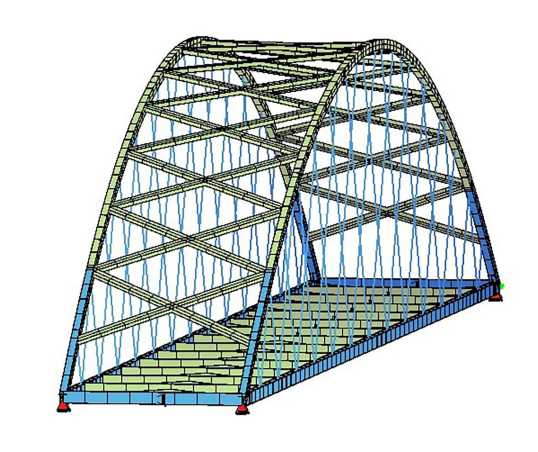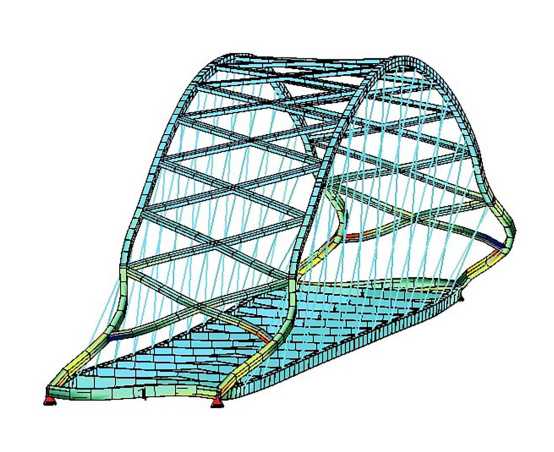Optimisation of Network Tied-Arch Bridges
Author: Katharina Ziegler
Language: English
Abstract
The topic of this thesis is the analysis of the cost-efficiency of different upper lateral bracing types in network tied-arch bridges. By arranging the hangers in a network, the bending moment in the plane of the hangers can be minimised for the tie girders and the arch ribs. At the same time, the in-plane stability of the arch ribs is enhanced by the closely spaced hangers. The slenderness of the arch ribs is consequently governed by the out-of-plane buckling behaviour of the arch ribs, which is directly related to the upper lateral bracing type.
For the reference case, which is the Blennerhassett Island Bridge, the behaviour of the entire structure is analysed for different bracing types. A comparison of all cases based on the estimated material cost for the entire structure allows a quantification of the benefits and drawbacks for each option. Based on the results, an inclination of the arch ribs with respect to the vertical plane benefits the overall behaviour and results in a decrease in the total material cost. Further, it is shown that for inclined arch ribs, a Warren truss offers a similar degree of bracing to the arch ribs as other bracing types (i.e., a diamond truss or a k-truss) while significantly decreasing the total transverse wind load acting on the bracing members. One main concern when considering different bracing types is compatibility. As the members are directly connected to the arch ribs, they are highly affected by the deformations of the arch ribs, as their stiffness is much larger than the one of the bracing members. In a Warren truss, the arrangement of the bracing members results in lower internal forces due to compatibility. By adding an additional horizontal member above the portals, the stability of the portal frame is increased and the required bracing for the braced arch can be reduced.
While these findings are specifically valid for the Blennerhassett Island Bridge, the thesis also discusses general particularities in the behaviour of the network tied-arch bridge.


